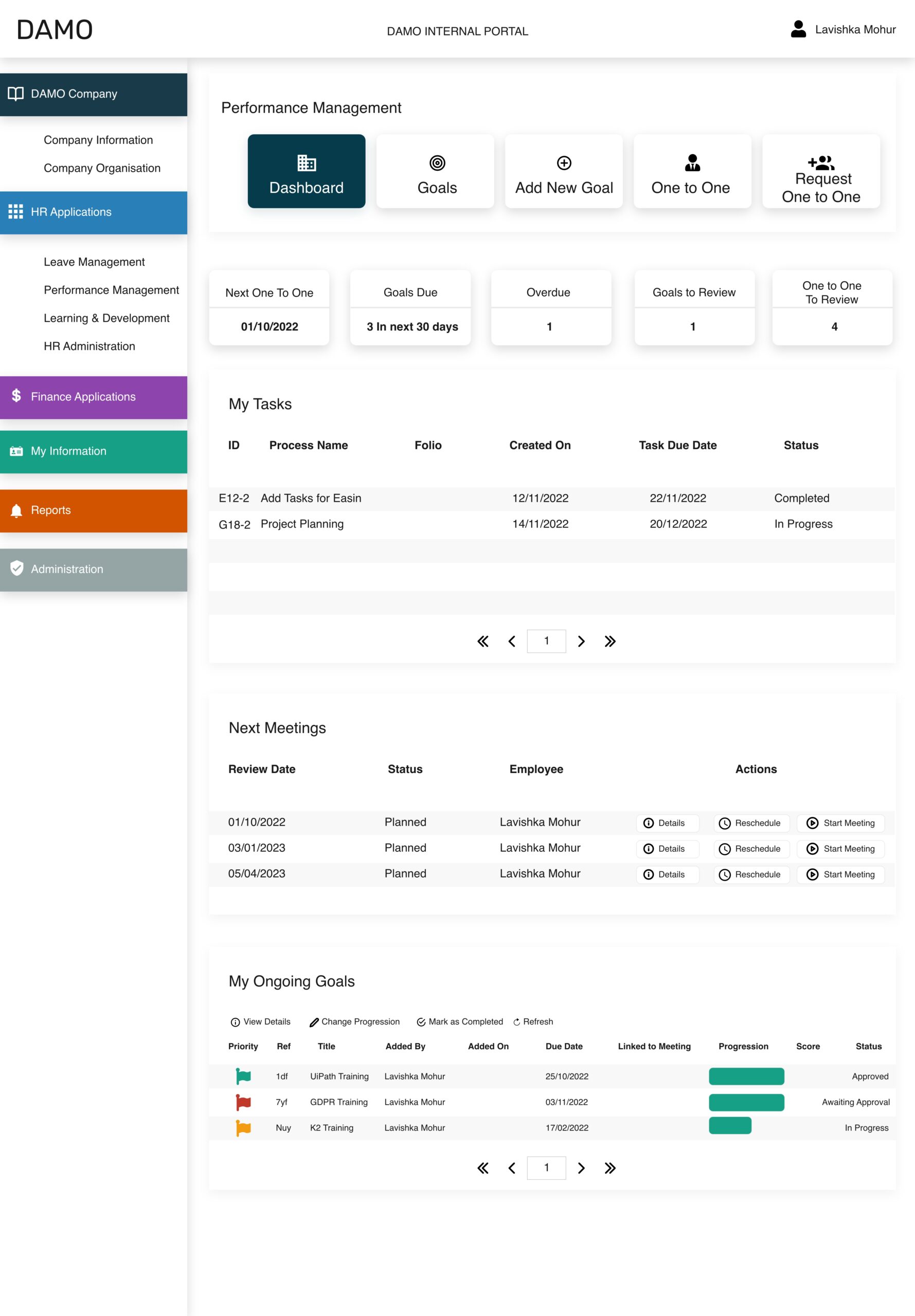
Sound employee performance management is vital for businesses. Through various processes, it helps them to align employees, resources, and systems to meet the overall business strategic objectives. Organisations that focus on improving the morale of employees, increasing their overall productivity, and creating a sense of loyalty among them through performance management are formidable competitive machines.
The first step on the road to performance management is to set the right course by defining goals at the individual level and aligning them with the overall strategy of the company. Individual goals are not set in isolation; it is a collaborative process between a manager or supervisor and the employee. Once the company-wide strategy has been established, individual goals are created to support the big picture. The manager or supervisor addresses both the shared and individual goals, roles, and responsibilities using a SMART (Specific, Measurable, Achievable, Relevant, and Timely) goal framework.
Different companies have different performance management processes but typically the performance cycle is as follows:
Having a performance appraisal in place in a company is one thing but making the entire workforce stick to it, is another. Paper-based or even performance appraisals just does not do the trick anymore. Many organisations struggle to complete their performance appraisals, communicate what is expected of their employees, and ensure that employees are held accountable for their results and performance.
The priority of most businesses is to grow their talent while retaining their star employees. And the best way to do this is to toss out the old, outdated paper-based performance systems and move towards an automated one – Automation is the real game changer!

1. Speeding up PM process
The PM end-to-end process time can be reduced by automating time-consuming tasks such as, reminding managers about deadlines, collecting the evaluation forms, and communicating the evaluation scores to employees. Every employee’s data or information can be retrieved quickly in one single portal.
2. Real-time visibility on progress trends
An automated performance management system allows employees and managers to refer to past activity and performance records. Having access to these help in delivering fair, transparent, and meaningful performance reviews and development recommendations to employees.
3. Statistics and Reporting
Moving to an automated employee performance management system gives access to a wide variety of data analytics. Analysis of employees’ performance is done instantly and reports are generated on:
i. Over/Underperformance
ii. Employee/Team skills and competencies
iii. Ideal training and development for employees and teams
iv. Goal progress and alignment with company objectives
v. Performance review completion rates
vi. Team/Employee strengths and weaknesses
4. Redirecting time spent on administrative tasks to more strategic execution
With an automated system for managing employee performance, clear timelines and tasks are set. Everyone then knows what is expected of them and by when. When a process step is completed, the software automatically notifies the next person as soon as the performance review is finished, with due dates and what they need to do. So, the HR department no longer needs to follow up and is not inundated with loads of admin work. Custom reminders can be created in the system to provide timely notifications and reduce the time spent reviewing employees and managers. Overall, the team’s productivity increases leading to costs savings.

Custom Workflow
You need the ability to create multiple performance evaluation plans for different hierarchies and the freedom to adapt the evaluation form to the way each department works. Adapting a business-specific workflow should not require IT expertise or programming skills. Companies need to be able to automate the appraisal process workflow without investing hours of their time.
Transparency
Employees will always tell you how concerned they are about the bias spreading through the appraisal process. The right appraisal tool provides complete transparency, seamless audit trails, and role-specific accessibility. Standardised processes eliminate reasons for nepotism, which improves morale and employee satisfaction.
Goal tracking
Monitoring an employee’s goal achievement is a major issue in performance management. The best performance appraisal tools automatically collect data from all stages of the appraisal cycle, shop it and analyse it for optimal goal tracking on the part of both the manager and the employee. This makes it easier for managers to access employee data for promotions or transfers.
Easy integration
Make sure that the performance appraisal automation software you choose integrates effortlessly with existing HR management tools. You should look for fast data exchange capabilities and little to no redundancies.
A Gartner Performance Management Benchmarking Survey found that 81% of HR executives are making changes to performance management. Some companies have even considered eliminating altogether the numerical or qualitative labels they use to rank their employees. Paper performance appraisals do little to motivate, empower or inspire employees, and handing out annual or quarterly appraisal forms is simply out of date.
At AMO, our experts deliver premium applications leveraging the Nintex K2 platform to enterprises across Europe. With our unrivaled development practices, we have built a bespoke Performance Appraisal automation solution for one of the leading Big Four accounting firms. This application was delivered within 6 weeks and used by more than 4000 employees.
Want to know more about how to move to an automated performance management system, get in touch with our team!
We gather information about your needs and objectives of your apps. Unsure about the app you need? We will carefully assess your top challenges and provide expert guidance on the perfect solution tailored to your success.
We create wireframes and an interactive prototype to visualise the app flow and make changes as per your feedback.
Estimation of the project deliverables including the resources, time, and costs involved.
Showcasing POC to relevant stakeholders illustrating the functionalities and potential of the app to meet business objectives.